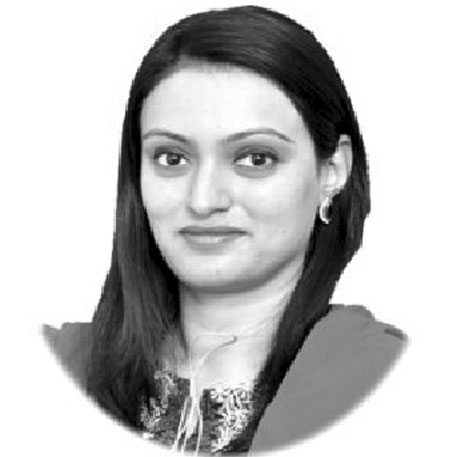Reema Shaukat
NATIONS have to face challenges on a daily basis within and outside. Certainly running affairs of a state is not an easy task and those at the helm of affairs have to tackle such challenges very wisely just not to let anarchy or chaos spread among public. Although the number of protests that have occurred around the world, protests for democracy are not new and have their own historic significance. Somewhere in the world these protests were able to bring change and resulted in significant reforms as demanded while in some cases these protests were bottled-up and could not bring revolution or transformation.
Certainly many factors lead to protest by public in any country. Mainly these revolve around economic crisis, inflation, poverty, right to justice, access to basic necessities of life, corruption or against any challenge to human rights. Sometimes the governing system or authorities are capable enough to identify and tackle the problem. But sometimes it is noticed that such protests are launched by troublemakers just to create fear or disturbance among public with no specific agenda. According to Social Scientist Brian Martin, “Protest is usually associated with groups that are outside the mainstream, that lack inside connections with the wielders of power. Protest is often ‘against’ something or other, an attempt to stop a policy or practice which would otherwise go ahead unquestioned. To many people, protesters have a bad image: the rabble in the streets. Although the vast majority of protest activity in liberal democracies is non-violent in reality and intent, an aura of actual or potential violence commonly accompanies media presentations and popular perceptions of protest. These images are part of an overall view which balances the ‘right to protest’ against a need for ‘law and order’.”
In case of Pakistan, such protests have adopted the form of dharnas or sit-ins. Though some small scale protests have always remained part of country but historically many protests were also done against the governance system, sustainability of democracy, elude dictatorship and much more. But for the past few years, these protests have adopted the form of sit-in protests or popularly known as dharna in domestic language. Sometimes without any certain agenda, political parties muster up and try to show their muscle against ruling party. Keeping aside political differences, such dharnas are introducing wrong culture of protests. There are a few political dharnas which hold importance in political history of Pakistan and different durations spanning over different time period. In January 2013, the protest by Dr. Tahir ul Qadri’s, Pakistan Awami Tehreek is considered as the flashy one while the dharna by PTI from August to December 2014 is considered as the longest one. There was one famous dharna by Tehreek-e-Labbaik Pakistan with the presence of Moulvi Khadim Hussain Rizvi who on religious notes set the pattern for protest. Recently there was another sit-in in the capital arranged by the JUI-F’s Molana Fazal-ur-Rehman which ended peacefully but without any clear agenda it flopped. Different viewpoints are there on these protests as some say that recent dharna is considered as the most peaceful dharna of all times as no damage to infrastructure, property or public happened.
All political parties have the right to differ and this difference of opinion is considered as necessity for democracy but keeping aside ‘Jamhoriat Ka Husn’, these ups and downs in political set-ups, no compromise should be made on the state’s honour. Whenever or wherever these protests happen, they question the state system first. How international media or foreign powers try to manipulate it is another side of the coin and in this era of 5th generation warfare, such tools are the most damaging one to the State. And in case of Pakistan, the present circumstances are the most crucial and sensitive simultaneously where each citizen of the nation has to play a vital role to avoid conflict at any level. The kind of turbulence Pakistan faced on the name of war against terrorism was enough to challenge security apparatus of the country and it proved to the world that despite limited resources, it not only sustained democracy but risen to the stature of peaceful nation. Considering the security as a dilemma, foes often try to bring in their people and sell their own agenda in so-called protests. Economic stability is another important strength on the basis of which nation’s threshold to bear any tremor is measured. With the fluctuating economic values and hanging sword of FATF implications every time, it is our duty to let not our enemy break our resolve and cash our weaknesses. Youth of any country is its asset but in this era of globalization and hybrid warfare, youth must be able to identify between the right and wrong. Going against the national narrative only brings disharmony. Marches, rallies or peaceful demonstrations which highlight the issue are important but sit-in protests or dharnas not only cause nuisance for public in case of road blockades but other inconveniences too. Media can play pivotal role with responsibility in guiding nation’s strength in a form of youth empowerment. The words of Gerard Arthur Way, are enough for any wise human to differentiate between good or bad kind of demonstrations.
“Say what you want but you NEVER say it with violence!”
— The writer works for Pakistan Institute for Conflict and Security Studies, a think-tank based in Islamabad.










